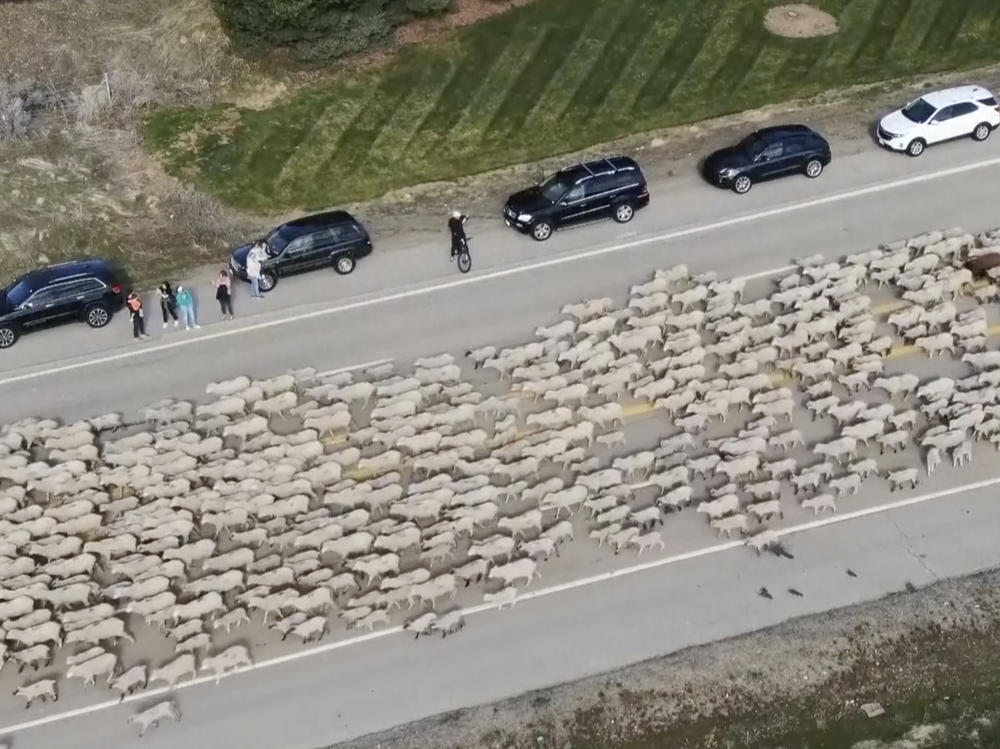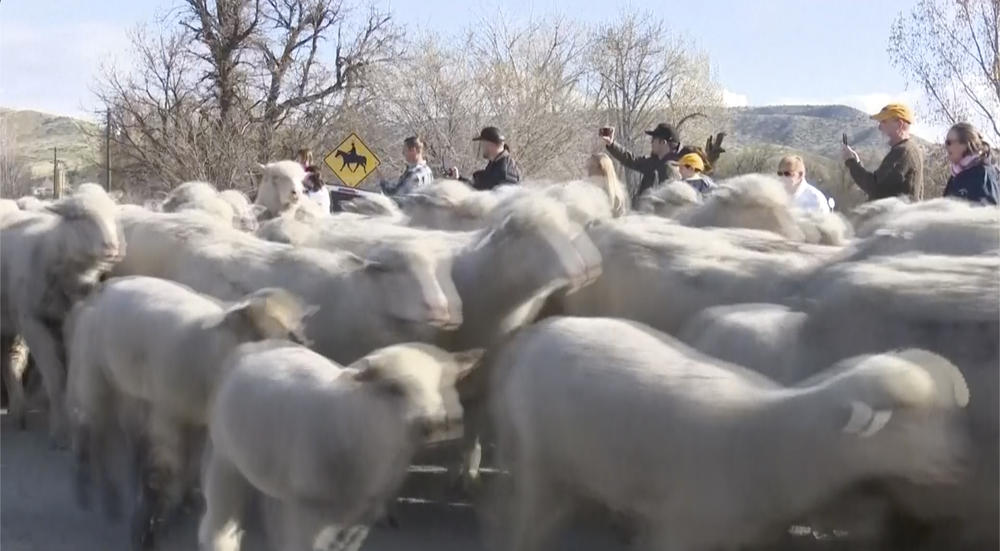Section Branding
Header Content
What's white, fluffy and has 10,000 legs?
Primary Content
BOISE, Idaho — Why did 2,500 sheep cross the road? Because the grass was greener on the other side.
In Idaho, it's not unusual to see ranchers moving a bleating herd of sheep up to higher elevation at this time of year. But the sight of 2,500 wooly beasts trotting across a highway earlier this week brought a crowd about 300 people.
It was the largest turnout that Steve Stuebner, spokesperson for the Idaho Rangeland Resources Commission, has seen in 15 years.
"It's a novelty. Maybe they've never seen anything like that before, but it's real typical in Idaho," he told KTVB-TV. "When you're out in rural parts of Idaho in the spring and summer, or fall, you could run into a cattle drive or a sheep drive."
Curious onlookers lined the road as the animals sheepishly entered the highway, guided by ranchers and steered by sheepdogs. They traveled up the road a little ways, the fluffy white herd obscuring the yellow-painted centerline amid a chorus of "baas" and the lead ewe's jangling bell.
Leaving the open road behind, they will journey through the sagebrush-dotted foothills for a few weeks to their summer home in the Boise National Forest.
This trip up to higher elevations is a tradition dating back around 100 years, the Boise-area TV station reported, and having the sheep graze in the forest helps prevent fires and invigorates plant growth.
The ovine spectacle will return when the sheep are brought back down again in the fall.
Copyright 2023 NPR. To see more, visit https://www.npr.org.


